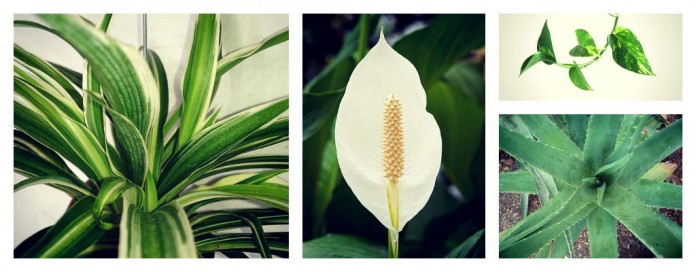Don’t let your green thumb go dormant over winter. Houseplants add color and life to indoor spaces when it’s cold and lifeless outside.
Although caring for indoor plants is similar to outdoor plants, houseplants require a few special considerations. The right temperature, humidity, light, container and potting medium, and watering and fertilizing schedule help houseplants thrive.
Temperature
Most houseplants do well in a daytime temperature of 70-78 degrees F, and overnight temperature of 60-68 degrees F. Growth and production are stunted if temperature falls below 60 degrees consistently.
To achieve ideal temperature range, try placing plants on a sunny windowsill during daytime hours. Place a windshield visor between plants and window to add insulation overnight, or move houseplants on top of the fridge or other surface that emits some warmth.
Humidity
Home heating dries out indoor air and lowers humidity. Two ways to increase humidity for plants with high-humidity needs are clustering houseplants together, and setting on a tray of wet pebbles.
Light
Light recommendations are annotated on houseplant nursery tags. 12-16 hours of light per day is standard for most houseplants. If you lack a sunny spot, supplement with artificial light.
Container and potting medium
Houseplants are typically potted soilless potting medium at time of purchase. Do not use garden soil to repot houseplants. Purchase soilless potting medium to add to the new container.
How to repot a houseplant. Repot a houseplant if roots start to grow through container drainage holes, you notice a lag in growth, or plant foliage overflows from the container. You may also decide to repot a houseplant to encourage it to grow bigger or to use a decorative container.
- Water houseplant in old container. Allow time for water to soak-in.
- Add a few handfuls of potting medium to the new container.
- Gently loosen plant from old container. Lift and set it in the new container. Roots will shift and spread a bit during the move- that’s okay.
- Fill-in around plant with potting medium. The goal is to maintain the plant’s original soil level.
- Tap container to settle soil.
- Water plant in new container.
Water
Only water houseplants when potting medium feels dry. Insert your finger below the surface of the soil to feel moisture level, then add just enough water to moisten. Water-logged soil will drown plant.
Watering houseplants is my favorite use of compost tea. Compost tea is nutrient leakage from compost. It can be collected from a vermicomposting leakage dish, or made by seeping “tea” bags of finished compost in water. Compost tea is not technically a fertilizer, but watering with compost tea reduces plants’ fertilizer needs.
Fertilizer
Fertilizer requirements can be found on nursery tags. Houseplant potting mediums are often formulated with extended release fertilizer; do not add additional fertilizer when repotting.
Easy to grow houseplants
- Prayer plant
- Snake plant
- Devil’s ivy
- Dragon trees
- Jade plant
- Aloe Vera
- Spider plant
- Cast iron plant
- Bamboo
- Peace lily












